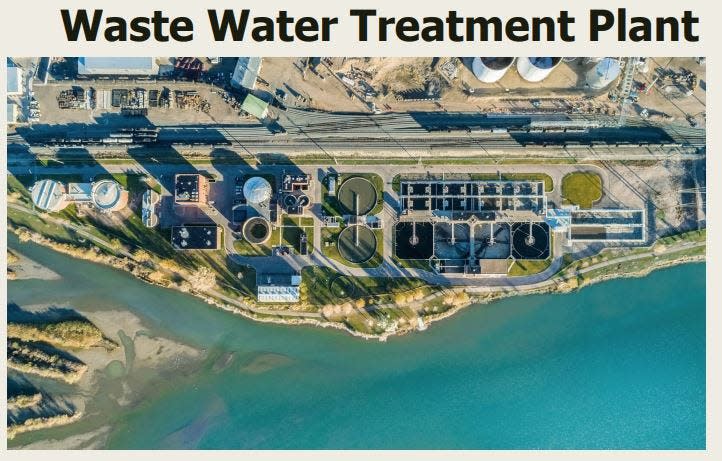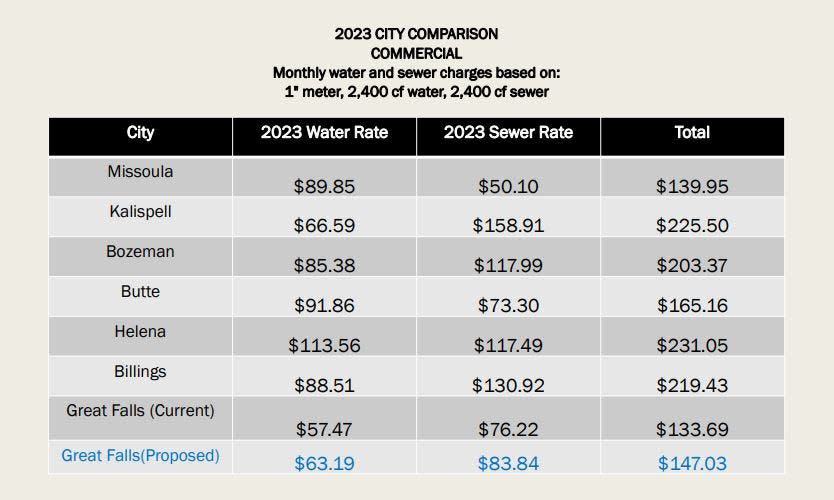Millions needed in infrastructure projects may force Great Falls to raise utility rates

Great Falls city commissioners are contemplating whether to raise city utility rates for the second year in a row, part of the annual budgeting process that can be difficult for both city officials and residents.
If passed, water and sewer rates would increase by between 10% and 15%, while fees to pick-up and dispose of residential and commercial garbage would rise by 5%. The cost of water usage varies considerably depending upon time of year and an individual homeowner’s water usage habits. However, a city staff analysis projects the combined rate increases would add around $7.55 to the average Great Falls homeowner’s monthly utility bills. Senior citizens would be offered reduced rate increases.
The greatest overall increase would be for the delivery of clean water and wastewater treatment. An analysis of the potential need for these increases notes that the city withheld from increasing utility rates for three-and-a-half years during the COVID-19 pandemic, and is now facing close to $187 million in sewer and water capital improvements over the next six years. If new state and federal regulatory requirements are imposed that figure could go much higher.

“Due to the extended time that the utility rates were in effect during COVID without any rate increases, from November 1, 2019 through June 1, 2023, the City is struggling with having the operational funding to maintain services due to inflationary costs as well as completing all of the necessary capital improvements,” the analysis notes. “The significant projects include Ongoing Sewer Rehabilitation for $6.6M, Wastewater Treatment Plant projects and improvements totaling $105.7M, and Lift Station Rehabilitation totaling $11.1M.”
The cost for improvements in the city’s treatment plant to ensure residents have enough clean drinking water are less dramatic, but still eyepopping. City officials estimate they will need to invest more than $60 million into water treatment and the systems that deliver it to household taps by the end of September 2029.
“The significant projects include Ongoing Water Main Replacements for $16.3M and Water Treatment Plant (WTP) upgrades for $22.4M,” the report states. “The cost of completing projects has increased substantially. For example, the solids handling project at the WTP was initially budgeted for $8M and it came in at just under $12M due to inflationary increases.”
Upgrades of the Sunnyside neighborhood’s pump station and the development of a new water storage reservoir in Great Falls’ south zone are expected to add another $12.5 million to the total cost before the end of 2029.
Operating expenses at the water treatment plant have also risen significantly. The city’s analysis notes the cost of chlorine as risen by 300% in just the last year and that electrical costs are expected to triple for the Water Treatment Plant and Waste Water Treatment Plant in the near term. These two facilities are the biggest consumers of electricity in the city, with annual costs totaling close to $4 million.
At Tuesday’s meeting city commissioners will have to decide whether or not to schedule a public hearing on the possible rate increases before June 1, the date by which any new rate increases would come into effect. If they decline to schedule a public meeting the rate increases will not be imposed.
The City Commission meets at 7 p.m. at the Great Falls Civic Center, at 2 Park Drive South.
This article originally appeared on Great Falls Tribune: Great Falls considering utility fee increases for city customers

